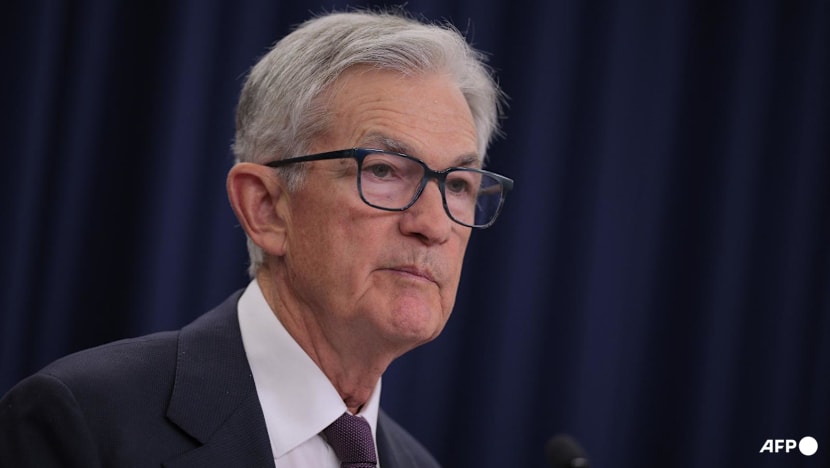US Fed cuts rates by quarter point, signals more reductions ahead
The Federal Reserve indicated that it will steadily lower borrowing costs for the rest of this year.

Federal Reserve Chair Jerome Powell holds a news conference following a two-day meeting of the Federal Open Market Committee at the Federal Reserve on Sep 17, 2025 in Washington, DC. (Photo: Getty/Chip Somodevilla via AFP)
WASHINGTON: The Federal Reserve cut interest rates by a quarter of a percentage point on Wednesday (Sep 17) and indicated it will steadily lower borrowing costs for the rest of this year, as policymakers responded to signs of weakness in the job market in a move that won broad internal support, including from most of President Donald Trump's central bank appointees.
Only Stephen Miran, who was sworn in as a Fed governor on Tuesday and is on leave as the head of the White House's Council of Economic Advisers, dissented in favour of a half-percentage-point reduction in borrowing costs.
The rate cut, along with projections showing that two more quarter-percentage-point reductions are anticipated at the remaining two policy meetings this year, indicates Fed officials have begun to downplay the risk that the administration's trade policies will stoke persistent inflation, and are now more concerned about weakening growth and the likelihood of rising unemployment.
The cut, the first move by the policy-setting Federal Open Market Committee since December, lowered the policy rate to the 4 per cent to 4.25 per cent range.
"In the near term, risks to inflation are tilted to the upside and risks to employment to the downside, a challenging situation" for monetary policymakers, Fed Chair Jerome Powell said in a press conference after the two-day meeting.
"It's really the risks that we're seeing to the labour market that were the focus of today's decision."
Powell said he believes the recent pace of job creation is running below the break-even rate needed to hold the unemployment rate constant, and that with businesses doing very little hiring overall, any increase in layoffs could quickly feed into higher unemployment.
"The labour market is softening and we don't need it to soften anymore," he said.
New economic projections released by the Fed showed policymakers at the median still see inflation ending this year at 3 per cent, well above the central bank's 2 per cent target, a projection unchanged from the last set of forecasts in June. The projection for unemployment was also unchanged at 4.5 per cent and the one for economic growth slightly higher at 1.6 per cent versus 1.4 per cent.
Stocks briefly rose after the decision before turning lower and closing mixed, while the dollar was modestly higher against a basket of major trading partners' currencies. Treasury yields were little changed and rate futures markets saw more than a 90 per cent probability of another rate cut at the Fed's next meeting in late October.
STAGFLATION RISK EASING
Compared to the stagflationary risks contained in the last set of projections, with the Fed slowing its rate cuts to head off inflation, the new projections show an emerging sense among officials that they can head off any rise in unemployment with a faster pace of rate reductions, while inflation eases slowly next year.
Fed officials have gradually warmed to the idea that Trump's tariffs would have only a temporary impact on inflation, and the latest forecasts are consistent with that view.
"Since April, to me, the risks of higher and more persistent inflation have probably become a little less, and that's partly because the labour market has softened, GDP growth has slowed," Powell said. The Trump administration announced sharply higher tariffs for most of the world in early April, but has since rolled them back.
The move to a more consistent pace of cuts was backed by Fed Governor Christopher Waller and Vice Chair for Supervision Michelle Bowman, Trump appointees who dissented over the policy decision in late July to hold rates steady.
Miran dissented over the size of the latest cut and appears to have pencilled in the steepest rate cuts in projections issued after he joined the central bank's Board of Governors on Tuesday.
In the newest "dot plot" chart of rate projections, one rate projection of 2.875 per cent for the end of 2025 stands out as being three-quarters of a percentage point below the next lowest one.
Trump has demanded steep rate cuts. Among those voting in favour of the policy decision was Fed Governor Lisa Cook, who attended the meeting despite Trump's effort to fire her and after two courts supported her challenge of his attempted dismissal.
















